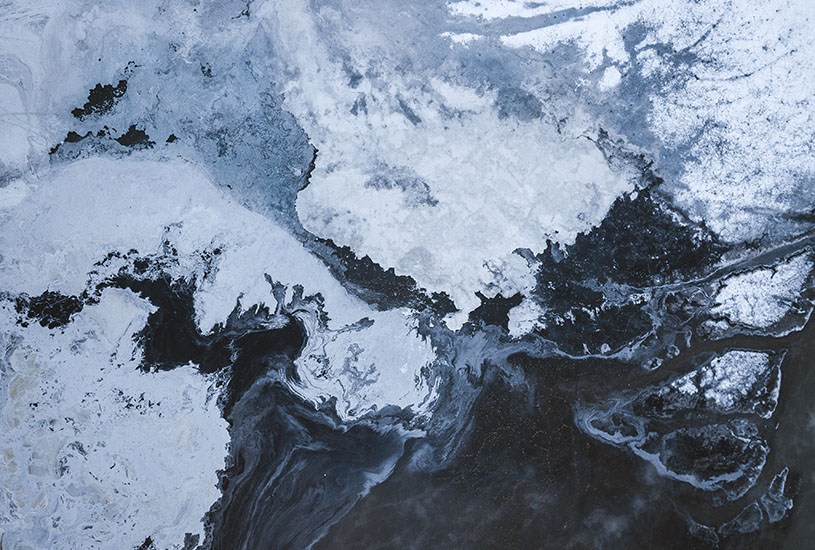We hear quite a bit about the conservation of threatened species, but what’s being done to save the ecosystems they live in?
Ecosystems around the globe are facing unprecedented threats, which are directly affecting biodiversity and the basics we need to live – such as clean water and air.
An important approach to conservation has been implemented to address the problem and has been extremely successful in putting threatened ecosystems back on the road to recovery.
The Red List
The Red List of Ecosystems (RLE), developed by an international team of scientists and practitioners including Deakin University researchers, was adopted in 2014 as the global standard for ecosystem risk assessment by the International Union for Conservation of Nature (IUCN), the world’s most influential and largest environmental organisation.
The RLE aims to assess the risk to the world’s protected areas – including land, ocean and freshwater environments. But since its launch five years ago, how has it actually created better understandings of threatened ecosystems?

Researchers from Deakin’s Centre for Integrative Ecology led the very first evaluation of the framework, in collaboration with partners from the IUCN and other NGOs and researchers from around the world, published last month in leading international journal, Conservation Letters.
They’ve dubbed the RLE a “breakthrough” in combating the management of ecosystems more sustainably after discovering some big findings.
The RLE has:
- Assessed more than 2,800 ecosystems in 100 countries across all continents
- Received rapid uptake from around the world by governments, NGOs and scientists
- Influenced legislative processes for environmental protection, ranging from protected area planning, mining regulation and biodiversity off-setting
- Provided vital information to help aid our future
The evaluation summarised the impact of the RLE on conservation, specifically looking at the on-the-ground impacts of the tool. Led by former Deakin researcher Dr Lucie Bland and Deakin’s Associate Professor of Conservation Science Emily Nicholson, the evaluation also found that its success extends beyond the environment.
“Unlike other studies of evaluation, we used a strict methodology that was developed by CSIRO to assess the impacts of its own research,” Dr Bland said. “We went through the different steps and quantitatively assessed how the RLE performed on each of these.”
Making better decisions
The researchers found that not only has the RLE helped communities avoid ecosystem collapse, but its associated socio-economic impacts are helping to inform better environmental decisions too.
“Locally, for example, the Mountain Ash forest in the Yarra Ranges was assessed as Critically Endangered with our methodology and, as a result, this triggered the establishment of an industry taskforce to provide recommendations for timber production, job security, and biodiversity conservation,” Dr Bland said.

The evaluation found the impact of the IUCN tool on a national scale was high, as countries were adopting the assessment to inform legislation, land-use planning and protected area expansion, reporting, and ecosystem management.
In Australia, the assessment of the endangered Coastal Upland Swamps influenced legal protection and government recommendations for changes to the design of proposed mines.
Countries that previously used disparate methods to assess their ecosystems, such as Norway and South Africa, are now using the RLE, while other countries, such as Myanmar, are starting to develop their first Red Lists.
“Ecosystem assessment was one of the world’s most significant conservation challenges, but through this system we are now able obtain a better understanding of the risks to the world’s ecosystems,” Dr Bland said.
“We are now able to make more informed decisions about sustainable environmental management.”
The review found that not only does the RLE provide suggestions of how to rehabilitate landscapes, but it also motivates governments.
“The RLE has potential to create stronger policy links with initiatives focusing on sustainable development and human health, which all depend on healthy ecosystems,” Associate Professor Nicholson explained.
“This area is a focus of our research moving forwards, to improve our understanding of these links”.
The researchers estimate the RLE will play a much more important role in global biodiversity monitoring in the coming years.
“What’s really useful about this evaluation is that it clearly identifies the places where we could have more impact in the future, with relatively low effort,” Associate Professor Nicholson said.
“By identifying the gaps, we can determine how to better promote the initiative and have further positive impact.”
A process for lasting change

The RLE helps to categorise threatened listings equally among countries to promote better co-ordination of conservation efforts across jurisdictions. Australian governments have agreed in principle to use the RLE as its assessment methodology to ensure consistent environmental reporting across both State and Federal levels.
“What’s so great about the RLE assessments is that they’re comparable across the globe,” Associate Professor Nicholson said, adding that in order to fully encapsulate the power of the RLE in the future more collaborations will be needed.
“While the Red List of Ecosystems is already used for international reporting through national mechanisms, we anticipate that it will also play a much more important role on the international scene in the coming years,” she said.
Nat Kerr
Staff writer
Planet under pressure – a science watchdog shares her story



